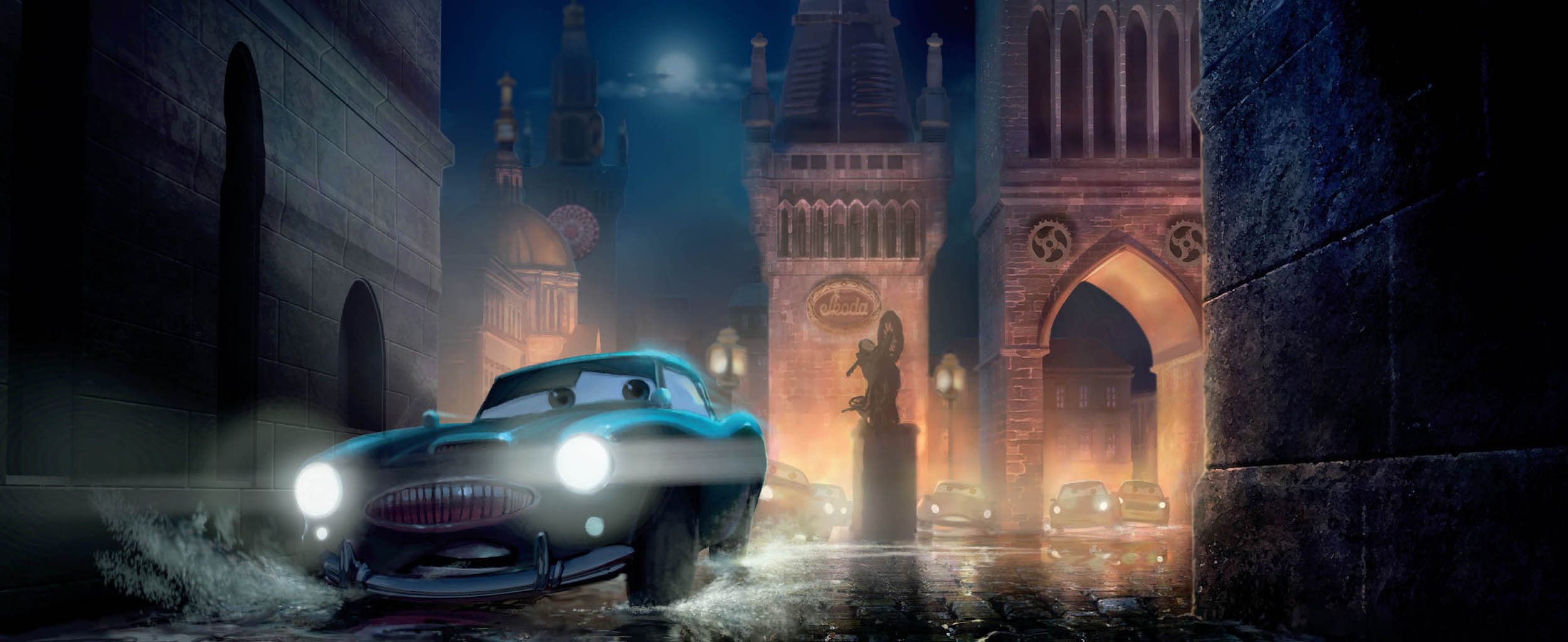
Armand Baltazar, Layout by Harley Jessup, Digital, 2008.

Armand Baltazar, Layout by Harley Jessup, Digital, 2008.
The following pages show a mere fraction of the amazing work that didn’t make it into the final movie. When the story was overhauled in early 2010, whole sequences fell away: a Calais port, the nighttime streets of Prague, an off-road Oktoberfest-themed rally in Germany’s Black Forest, and a glitzy gala in Munich that was later relocated to Tokyo. Characters disappeared as well: an Alfa Romeo–inspired double agent named Giulia, and a mysterious failed race car named Zil—the film’s original villain.
Based on an actual 1950s race car manufactured by Z.I.L. (Zavod Imeni Likhachova), a Russian automotive company best known for its armored transport vehicles, the Soviet-era car was intended to challenge the top race cars of the day. Instead, it turned out to be a high- profile dud, its top speed a mere 85 miles per hour. Zil the character had a coterie of comparably bad (mechanically and otherwise) cars to do his dirty work. Though this character was ultimately put aside in favor of another evildoer, his sidekicks were kept on as the Lemons.
“It’s interesting how early ideas that are good will find their way back into the story and actually serve to solve a new problem,” says Jessup. “It’s a phenomenon that happens many times on every Pixar film; it’s like the idea’s time has finally come. For example, we visited the incredible National Art Center Museum in Tokyo—an amazing glass and concrete structure—but at that point the museum scene, set in Munich, had been cut. As soon as we heard the museum party was back in, now set in Tokyo, we knew we had the perfect place for it.”

Sculpt, Jerome Ranft, Clay, 2009.
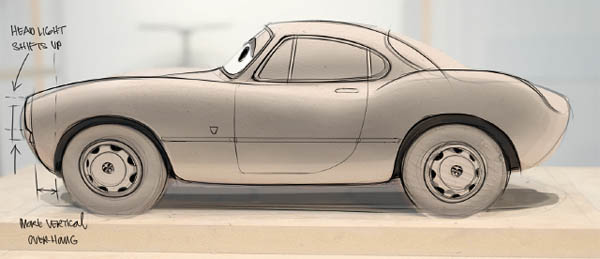
Jay Shuster, Digital over sculpt by Jerome Ranft, 2009.
“In one of the earlier incarnations of the movie, we had a character named Giulia who was basically a double agent; she connected with Mater, the two of them went off and had their own adventures, and then met up again with the other characters at the end.”
—NATE STANTON
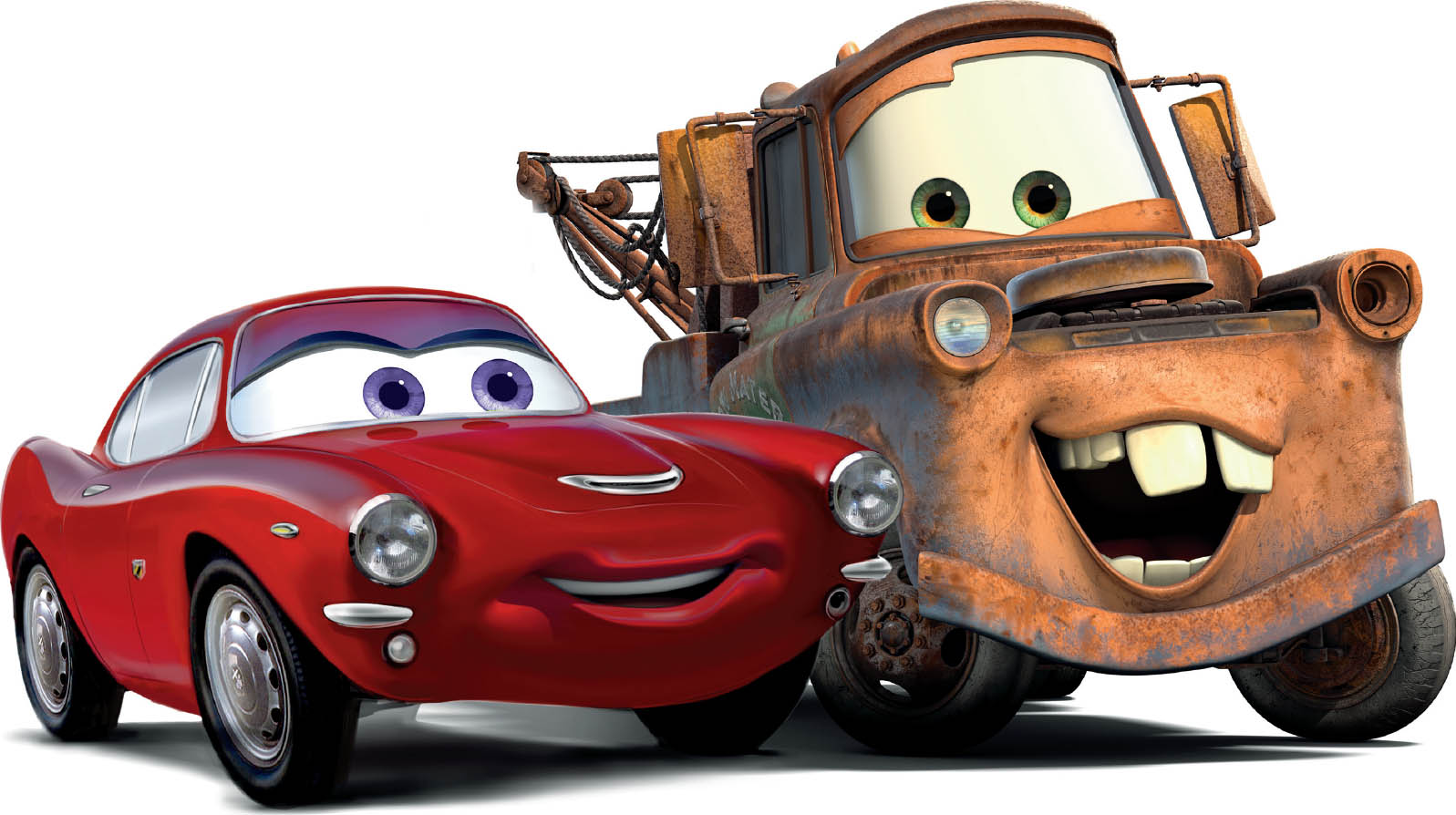
Jay Shuster, Digital, 2009.

Armand Baltazar, layout by Jay Shuster, Digital, 2008.

Sculpts, Jerome Ranft, Clay, 2009.
“At one point we had a scene that was to take place at a huge port in Calais. A lot of that environment would just look like functional machinery to humans. But in the Cars world, it was an enormous international marketplace with a great New York–like vibe. Cargo ships, sailboats, yachts, trucks, trains, cranes—it was a teeming and energized environment, with everything in transport from one place to another.”
—BRAD LEWIS

John Lee, Pencil/Digital, 2009.

Armand Baltazar, Pencil/Digital, 2009.
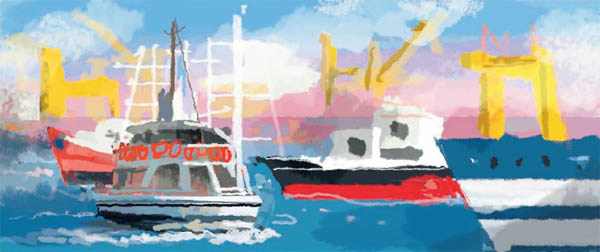
Harley Jessup, Digital, 2009.

Jay Shuster, Pencil/Digital, 2009.

Jay Shuster, Pencil/Digital, 2009.
“Early on we were going to have multiple alternative fuels that each of the race cars would be driving on. There were all sorts of crazy ideas—cars running on bananas, algae, coffee, helium, solar power, even wine. I always chuckle at the idea of little pittie cars crushing grapes in a giant barrel in the pit area of each race.”
—NATE STANTON
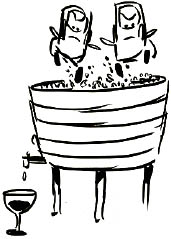
Josh Cooley, Ink, 2009.
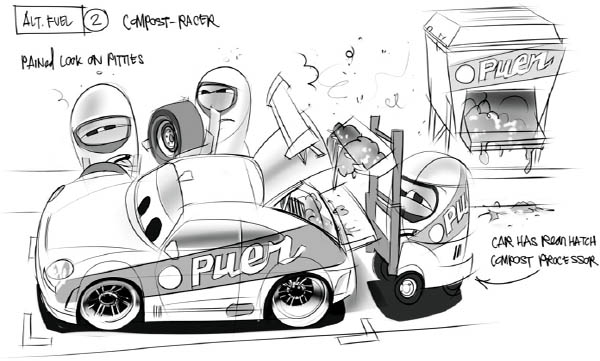
Jay Shuster, Pencil/Digital, 2009.

John Lee, Digital, 2009.
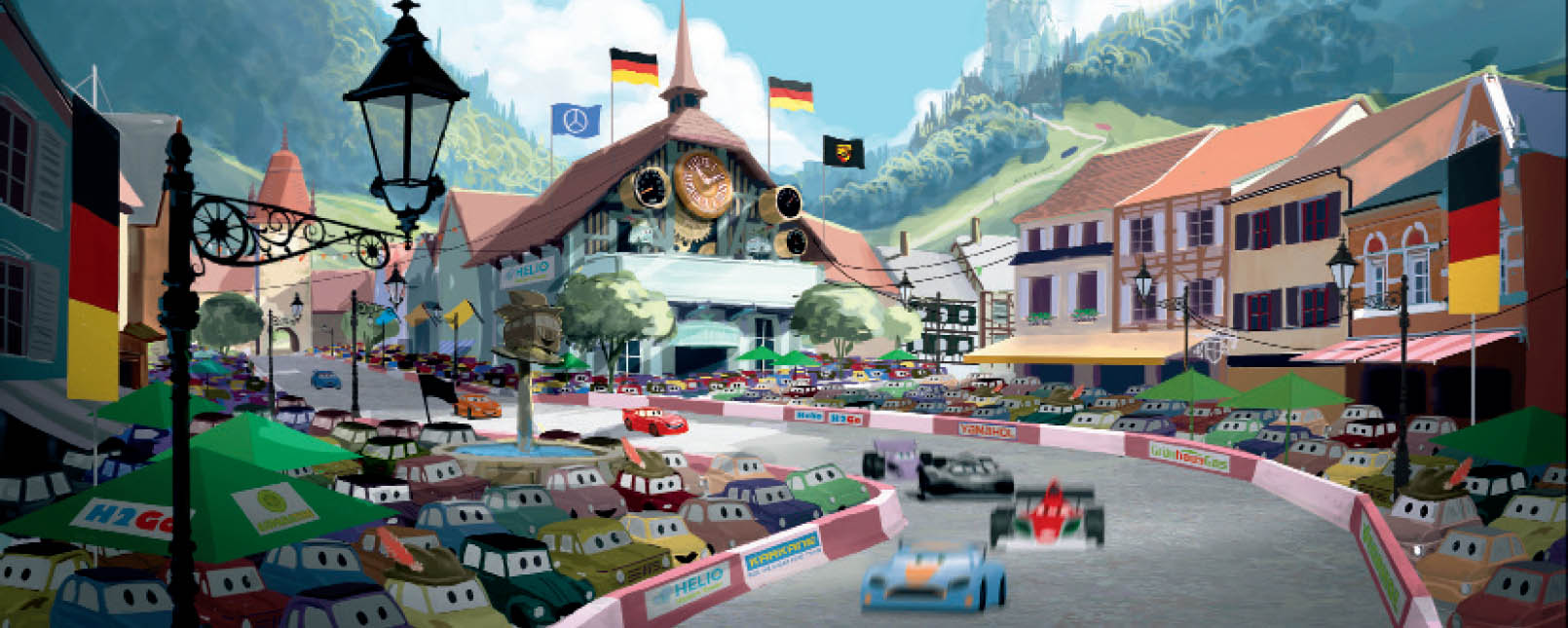
John Nevarez, Digital, 2009.
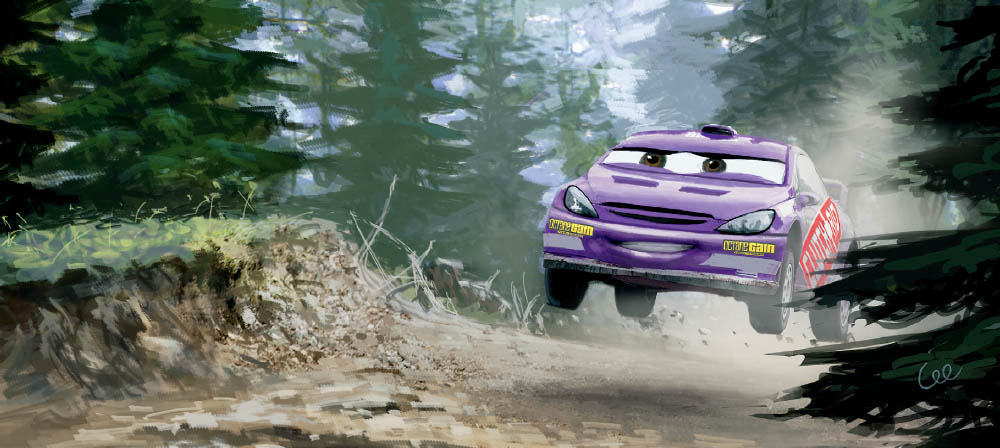
John Lee, Digital, 2009.
“We were going to have an off-road race in Germany, which I think would have been really cool; it was going to be the most unique of our races. I do regret that we missed out on that. But within the story structure you saw so little of that race; I can understand why it fell off to the wayside.”
—NATE STANTON
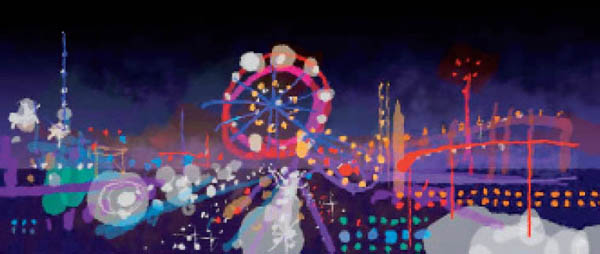
Harley Jessup, Digital, 2009.

Armand Baltazar, Layout by Harley Jessup and Jay Shuster, Digital, 2008.
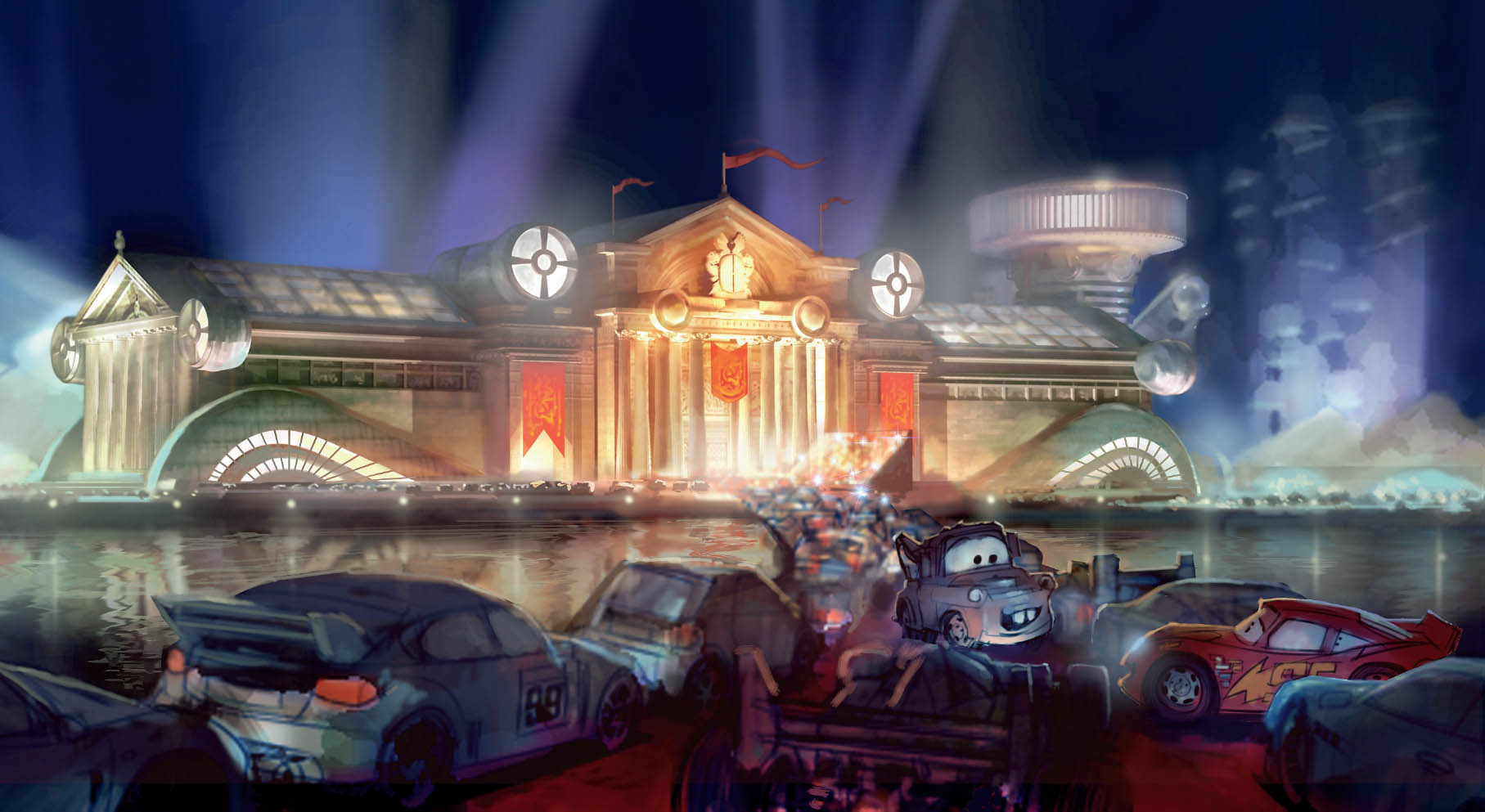
Armand Baltazar, Layout by Philip Metschan and Jay Shuster, Digital, 2008.
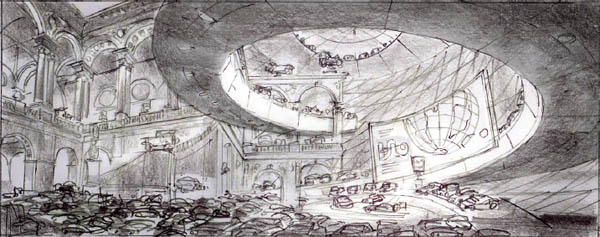
Harley Jessup, Pencil, 2009.
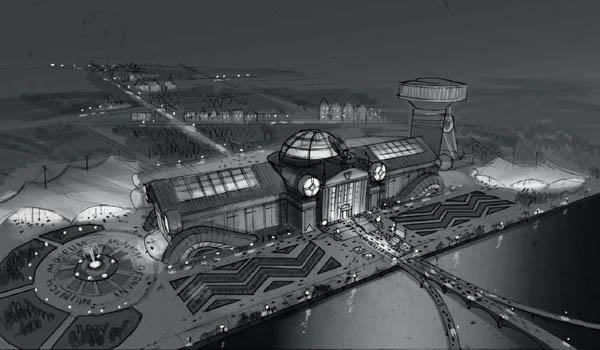
Nat McLaughlin, Pencil/Digital, 2009.
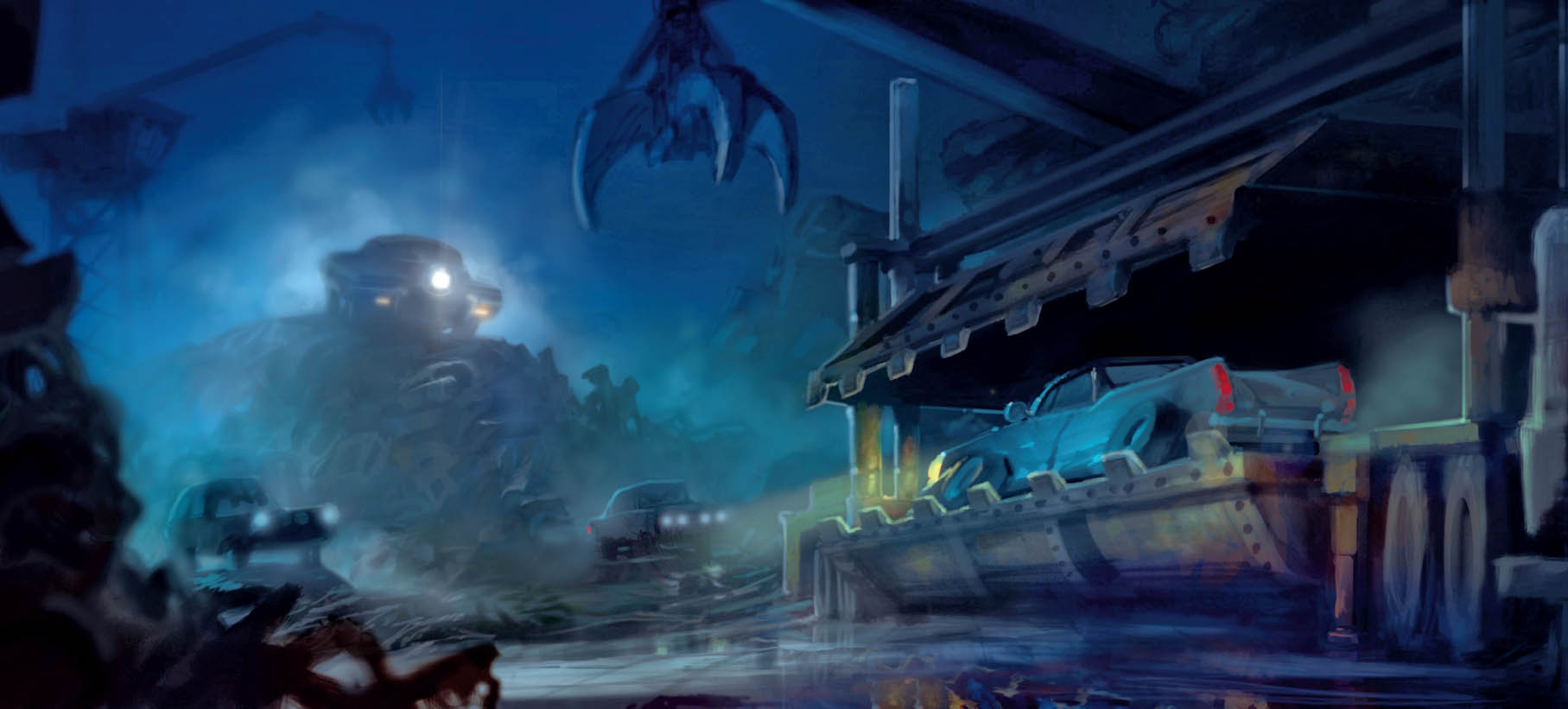
Armand Baltazar, Digital, 2008.
“In an early version of the story, a British agent was captured in a scrap yard on the outskirts of Prague and questioned while being slowly squashed in the jaws of a car crusher. The junkyard at night was a great spooky setting and parts of this idea show up in the Tokyo Lemons’ Lair sequence.”
—HARLEY JESSUP